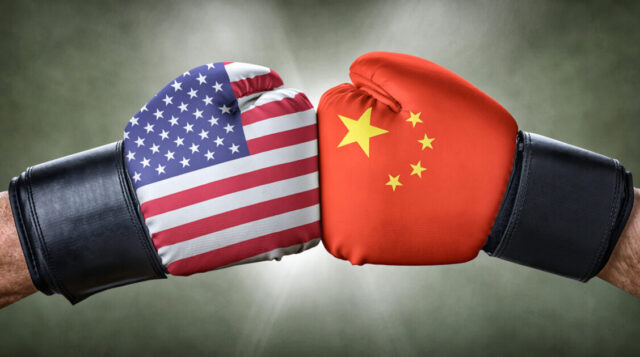- Chalice betting its greener nickel will eventually win out
- PLS MD says ‘no way to shift supply chains from China in the near term’
- More Western buyers will provide more transparency for lithium prices: Liontown CEO
Three years on from its stunning and unexpected discovery, Chalice Mining (ASX:CHN) faces a massive task turning a large nickel, copper and PGE sulphide discovery just 70km from Perth into a mine that can help satisfy the world’s demand for battery minerals.
And managing director Alex Dorsch says the deposit will be supported by Western electric vehicle and battery makers desperate to secure a supply of nickel untainted by its delivery through the Chinese supply chain.
He insists offtakers will deliver green premiums for product that provides an alternative to the Indonesian nickel industry dominated by Chinese capital.
“The dilemma for those parties at the moment is that really Indonesia is their go-to destination, which has obviously been financed by China, with Chinese capital,” Dorsch said on the sidelines of the Diggers and Dealers Mining Forum in Kalgoorlie yesterday.
“So I think they are facing an issue there and in just getting access to the quantities of metal that they’re talking about requiring which is really sort of pushing them in that direction. They’re just not seeing enough sulphide or Western sourced nickel to get anywhere near satisfying each of their requirements.
“That’s been great for us because obviously, our nickel we expect will be very low carbon, it’ll be very high sustainability standards, it’ll be very desirable to a range of companies.”
Chalice is inching towards a scoping study on the Gonneville deposit at its Julimar project, situated on private farmland near the Julimar State Forest.
A strategic partnering process, drawing interest Dorsch says from miners and OEMs alike, is under way with a view to providing the financial muscle and technical knowhow to develop a complex polymetallic project which ranks as Australia’s largest nickel sulphide discovery since the year 2000.
Mean, green, ESG machine?
The location of Chalice’s Gonneville discovery will no doubt result in permitting challenges and a potentially elongated approvals process.
It currently plans to turn the 2km long resource into a large open pit with a processing plant and future underground.
While not included in Gonneville itself, some drilling has taken place at targets further north beneath the State Forest, a bone of contention for environmental activists.
Part of Dorsch’s job is to convince the WA and Federal Government the benefits of mining a deposit that will supply metals essential to the energy transition in an environmentally sensitive part of WA.
He says potential partners and offtakers who view ESG as a key pillar of their investment strategy will continue to support projects like Julimar over supply from places like Indonesia.
“They will demand the very best environmental standards, obviously, the biodiversity commitments, the offset requirements that we’ll have, they will expect the very highest standards and I think that comes with the course in Western Australia, right?” he said.
“If the alternative is to rely on Indonesian supply with very, very little regulations, they have a lot of faith in Western Australia’s mining standards and regulations in delivering … a lower environmental footprint.”
Nickel prices soared as high as US$50,000/t during a short squeeze following the Russian invasion of Ukraine last year. But they’ve shortened to around US$20,000/t with a flood of supply from Indonesia leading the International Nickel Supply Group to see a 239,000t supply surplus this year despite rising demand from EVs for the primarily stainless steel ingredient.
Despite lower prices, Dorsch says the key factor in Julimar’s commercial outlook will be Western automakers’ efforts to shift battery metals supply to sources that help them qualify for US Inflation Reduction Act credits.
“Nickel is ultimately just a smaller contribution to our value of our project. It’s about a 50% precious metal (to) 50% base metal split that in terms of potential revenue streams from Gonneville as a mine,” he said.
“So obviously, we care about the nickel price, but it’s not the primary driving factor.
“Whilst the price has come down, I think I’d caution that when you have a situation where China obviously is so dominant now … taking the vast majority of that Indonesian supply, I think you lose that transparency around what the real price is.
“Western carmakers … their demand for nickel is not particularly elastic, if they are going to build those cars they need the nickel and under obviously the IRA, there’s a substantial subsidy which effectively allows them to pay a significant green premium.”
Chinese and Western markets essential for energy transition
If anyone thinks the West’s reliance on China, which controls the bulk of the processing and refining industry in nigh on every major commodity market, is going to end soon, think again.
Pilbara Minerals (ASX:PLS) sold 8% of the world’s lithium raw materials from its Pilgangoora mine in 2022.
That will get bigger with an expansion to 680,000tpa of spodumene concentrate due in 2024 and 1Mtpa in late 2025.
It could go even further with a resource update yesterday, which pumped Pilgangoora up to 414Mt at 1.15% Li2O, around 4.75Mt of lithium oxide.
PLS is seeing plenty of interest from Korea, where its major customer POSCO is building a downstream processing plant in a JV where PLS can opt into a 30% stake, as well as Japan, the EU and the US.
But speaking on the sidelines of the Diggers and Dealers Mining Forum, MD Dale Henderson said there was no way to shift supply chains from China in the near term.
“I think any sort of shutting off of the existing supply chain is highly unlikely and the reason being the build out that needs to occur for these other regions is fairly early in the journey, and there’s a lot more of all steps of the supply chain to be further built out,” he said.
“So I think, in the near term, certainly in the next couple of years, the supply chain will remain Asia-centric.”
While the IRA presents an impetus for companies in Pilbara’s position to supply eventually to Western customers, he cautioned it remains too early to see how a more diverse lithium demand sector will evolve.
“I think the biggest challenge we’ve got is it’s the birth of an industry and it’s growing rapidly in all directions,” he said.
“So it’s very hard to look outward and understand where we’re at – all may fall.
What guides us is just fundamental principles around cost, domicile stability, sustainability, those are broadly the the key metrics which guide us as we sort of look outward at prospective emerging parts of the world or battery hubs.”
On the flip side, Liontown Resources (ASX:LTR) is targeting customer relationships that will make its output compliant with the US IRA.
Liontown CEO Ottaviano says the strategy for the $895 million Kathleen Valley mine is to be an ex-China supplier.
“Close to 90% of my production is now secured under Tesla, Ford and LG. So then I’ve got about 10% that I’m going to play in the spot market,” he said.
“Now that is tonnage that could go anywhere, it could go into China. But my core focus is, and it was a deliberate strategy from the very beginning, is to be ex-China.”
Unlike Henderson, Ottaviano believes the introduction of more Western buyers will provide more transparency for lithium prices, reinforcing his belief in a buoyant long term price environment.
Chalice Mining (ASX:CHN), Pilbara Minerals (ASX:PLS) and Liontown Resources (ASX:LTR) share prices today:
You might be interested in












